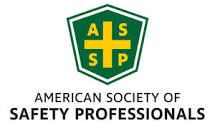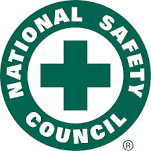Why new employees are vulnerable to injury | Safety Training | FIRST, VERIFY
Safety training is important to every industry. Whether employees work in a traditional office, a manufacturing facility, or at construction site, each employee should be properly trained for the job they perform and be completely prepared for the potential risks they might encounter. Most often safety training is provided to new employees during their initial orientation when they first start the job.
This is because new employees may be vulnerable to injury for the following reasons:
- Employers may assume that new hires already know how to perform their jobs safely.
- New employees may not be familiar with the required protective equipment, and rules regarding protective equipment usage may not be consistently enforced.
- New employees may lack the clarity about the safety aspects of the new job and the new surroundings.
- New employees may not know whom to talk to during an emergency situation and the reporting structure to follow in such circumstances.
- New employee training may be focused primarily on completing the tasks and ignoring the hazards associated with those tasks.
Injuries are also common among new employees and temporary workers not only because they are new or lack experience but more so because they may be less willing to ask for assistance.
New employees may face any combination of these barriers to safety training when they begin a job. Therefore, it’s important for employers to work with a knowledgeable and experienced safety professional to develop a comprehensive training program that includes safety discussions during onboarding and on a regular basis.
Developing a New Employee Safety Training Program
Ideally, new employee safety training programs should address topics such as:
- Building and supporting a culture of safety and a commitment to preventing injuries.
- OSHA requirements related to the job and the organization, including each employee’s right to refuse to do any work they deem unsafe until safety protocols have been implemented.
- Procedures for responding to and reporting safety hazards and emergencies.
- Reminders that employees have a right to report safety hazards, injuries and incidents without the threat of any repercussions.
- Risks associated with common daily tasks.
- Workplace safety training rules during the COVID-19 pandemic.
Ideally, safety training should take place before an employee starts work, during their new employee orientation. However, because of the amount of material typically presented during orientation sessions, it’s a good idea to follow up with refresher trainings and updates throughout the year.
Regularly reiterating safety guidelines also helps to create a culture of safety within the organization. When you put a priority on avoiding accidents, remind employees of best practices, and – most importantly – enforce your rules and regulations, your employees will be more likely to take their training seriously and remain safe.
FIRST, VERIFY’s Online Safety Orientationis a cost effective and efficient option for every organization to ensure safety preparedness of their new and existing workforce and help avoid OSHA violations and citations. Learn how we can help.
You might also like

Book a Service Today
We will get back to you as soon as possible
Please try again later
Safety Starts Here!
We are available weekdays, starting at 8:00 am central.
FIRST, VERIFY Privacy Policy





